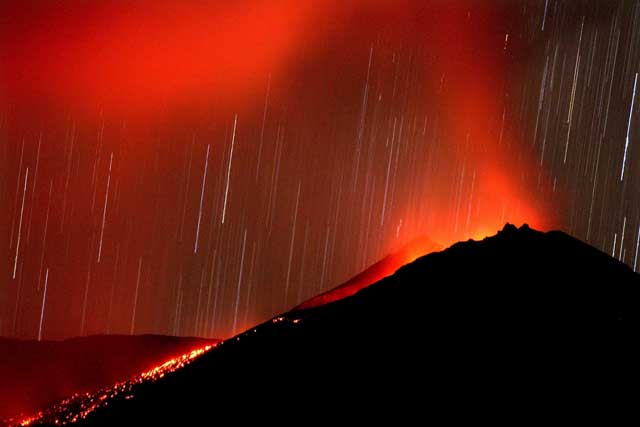Can engineering the earth save it from catastrophe?

Fears that the world is not doing enough to cut carbon dioxide emissions are forcing scientists to "think the unthinkable" by taking seriously the idea that humans may have to alter the global climate artificially with mega-engineering projects.
The Royal Society will launch a study later this year aimed at reviewing the possibility of saving the planet by "geoengineering" the climate on the grandest scales imaginable.
Geoengineering encompasses schemes such as fertilising the oceans with iron filings to draw down CO2 from the atmosphere, creating more reflective clouds, or even pumping vast quantities of sulphate particles into the air to simulate volcanic eruptions that cut out sunlight and lower global temperatures.
Until recently geoengineering has been a technology that dare not speak its name. However, a growing disillusionment with the ability of governments to reduce CO2 emissions has forced scientists to come up with a possible last-ditch technological fix to avert global catastrophe.
"Global emissions of greenhouse gases continue to rise, so there is inevitably interest in technologies that may be able to provide a 'fix'," said Lord Rees of Ludlow, the president of the Royal Society.
"It's not clear which of these geoengineering technologies might work, still less what environmental and social impacts they might have, or whether it could ever be prudent or politically acceptable to adopt any of them ... None of these technologies will provide a 'get out of jail free card' and they must not divert attention away from international efforts to reduce emissions of greenhouse gases."
The Philosophical Transactions of the Royal Society, published today, devotes an entire issue to examining ways of altering the climate or interfering with the carbon cycle in a way that could offset the rise in greenhouse gases and the consequent increase in temperatures.
Professor Ken Caldeira of Stanford University said it was important to plan now for the possibility of having to use geoengineering. "Every year CO2 emissions continue to climb," he said. "Reducing CO2 emissions requires individual sacrifice in the here and now for the public good of the distant future. If we start soon, we can phase in climate engineering slowly and cautiously, and back off if something bad happens. The least risky thing to do is to start testing soon."
Professor Stephen Schneider, a climate scientist at Stanford who has resisted geoengineering in the past, said: "We are being placed in the precarious position of choosing the lesser of two evils. Potentially dangerous, uncontrolled climate change due to greenhouse gases emissions; or technological fixes involving large-scale geoengineering projects."
Geoengineering projects
*High Reflection
The eruption of Mt Pinatubo in 1991 pumped enough sunlight-reflecting sulphates into the upper atmosphere to cool the Earth by 0.5C for up to two years. It may be possible to inject sulphates into the stratosphere from aircraft, right, but this would not deal with ocean acidification caused by rising CO2 and might cause acid rain.
*Low Reflection
A variation would be to pump water vapour into the air to stimulate cloud formation over the sea, thus raising Earth's albedo (proportion of light reflected). Seawater could be atomised to produce tiny water droplets that would form low-level maritime clouds.
*Fertilising the sea
The limiting factor for growing phytoplankton – tiny marine plants – is the lack of iron salts. Adding iron to "dead" areas of the sea leads to blooms which absorb CO2. But whether the plants will sink, taking the carbon out of circulation, or be eaten, returning it eventually to the atmosphere is not clear.
*Mixing layers
Giant tubes could be built to carry surface water rich in dissolved CO2 to lower depths where it will be locked under the temperature gradient that keeps deep water layers from surfacing. Critics fear it could instead bring carbon locked in the deep ocean to the surface.
Join our commenting forum
Join thought-provoking conversations, follow other Independent readers and see their replies
Comments
Bookmark popover
Removed from bookmarks